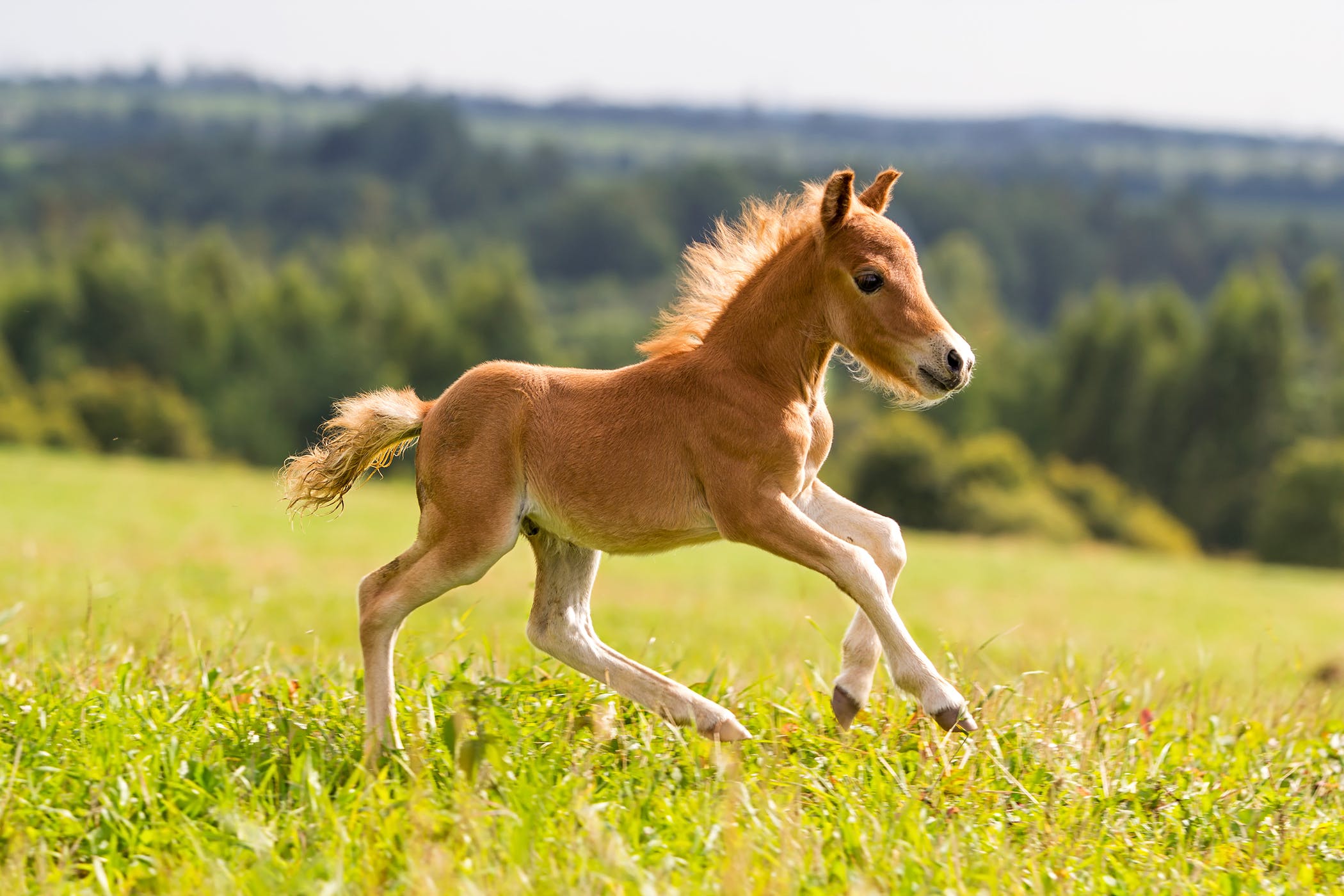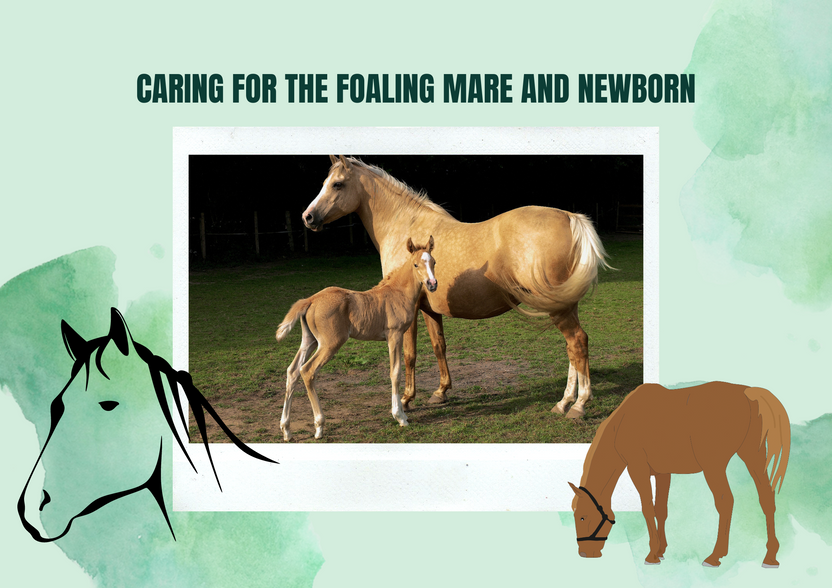CARING FOR THE FOALING MARE AND NEWBORN
Posted by Angelia James on 24th Nov 2021
Mares seem to prefer to foal at night in privacy, and apparently have some control over their delivery. Hiring a foaling attendant, installing a video monitor or using a birth alarm system can save the life of the foal if a problem should arise. Here are some things you need to notice when caring for the foaling mare and newborn horses.
Firstly, make sure your mare will have a clean, safe, quiet place to foal. Horses have been giving birth on the open range for eons, and this is still an acceptable choice. Allowing the mare to foal in the pasture even has some advantages.Should you choose to foal your mare in a stall, provide one that is a minimum of 14' x 14'. If possible, the stall should have adequate bedding and a floor that can be readily cleaned and disinfected. Dirt or clay floors make sanitation more difficult. Straw (particularly wheat straw) is preferable to shavings, as it won't cling to the wet newborn or mare the way small wood particles can. Remove manure and soiled bedding promptly and disinfect the stall between deliveries.
Secondly, make a timetable/ a countdown for mares
The mare's udder begins filling with milk 2-4 weeks prior to foaling.
The muscles of the vulva and croup relax. The tailhead may become more prominent a few days prior to foaling.
The teats become engorged four to six days prior to foaling.
"Waxing" of the teats occurs (a yellowish, honey-like secretion [colostrum] appears one to four days prior to foaling).

Thirdly, it’s birth preparation. Most mares foal without difficulty. It usually is best to allow the mare to foal undisturbed and unassisted. If a problem becomes apparent, contact your veterinarian immediately.
What you can do:
Write down your veterinarian's phone number well in advance of the birth and keep it by all phones.
Keep a watch or clock on hand so you can time each stage of labor. When you're worried or anxious, your perception of time becomes distorted. The watch will help you keep accurate track of the mare's progress during labor. Take written notes so that you won't have to rely on memory alone.
Wrap the mare's tail with a clean wrap when you observe the first stage of labor. Be sure that the wrap is not applied too tightly or left on too long as it can cut off circulation and permanently damage the tail.
Wash the mare's udder, vulva and hindquarters with a mild soap and rinse thoroughly.
Clean and disinfect the stall as thoroughly as possible. Provide adequate bedding.
Test strips that measure calcium in mammary secretions are available commercially. These strips aid the owner in predicting when the mare will foal because sudden increases in calcium are associated with imminent foaling.
Last but not least, here’s a final note for you.
Nature has provided an efficient system for the mare to deliver and care for her young. Be a prepared and informed owner so you can enjoy the miracle of birth, keep your anxiety in check and help the new mother and foal get off to a great start. For more information, contact your veterinarian for advices.

